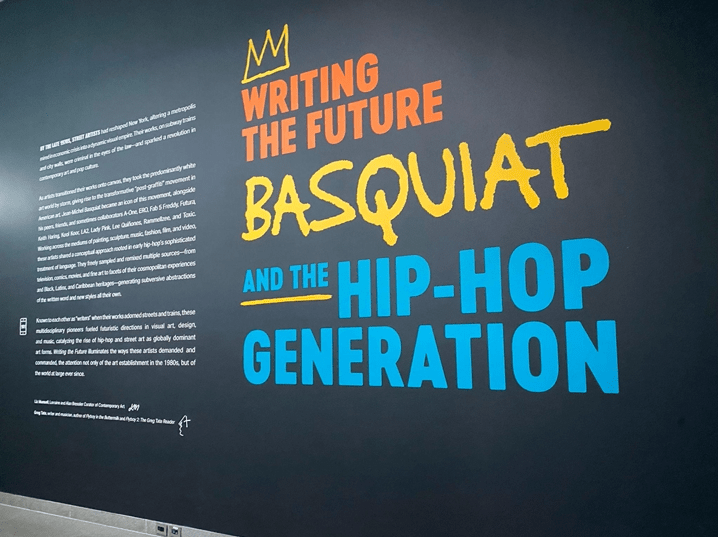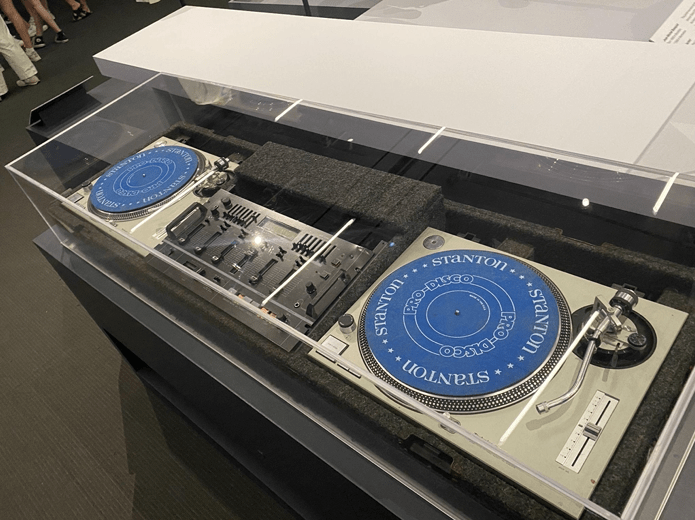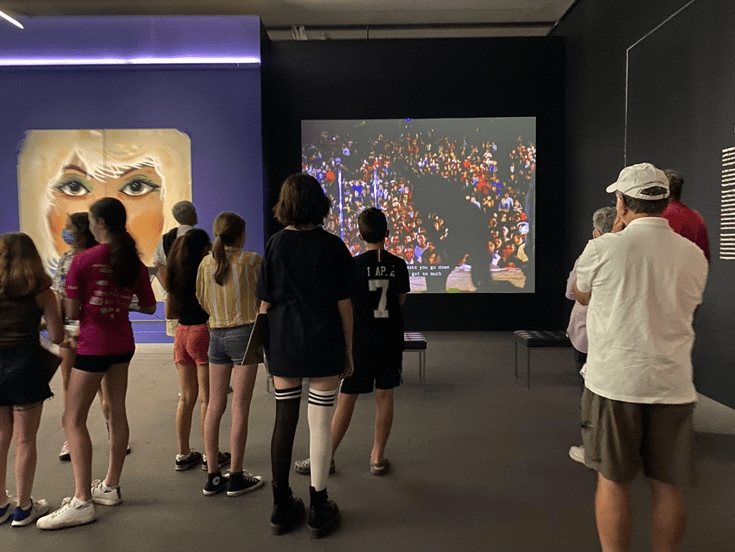Hip-Hop at the Museum of Fine Arts
Written by: Marjorie Anne Portillo
During my stay here in Boston, I have been given a few opportunities to visit and explore Boston. It was my goal to try to visit some of the many museums located around the city. And while there are many historical museums and sites in the area, I also wanted to try and visit some art museums. A couple of weeks ago, I had the chance to visit the Museum of Fine Arts–a museum that’s considered the 14th-largest museum in the world! I really wanted to visit because of a specific exhibit that was being showcased: Writing the Future: Basquiat and the Hip-Hop Generation. Hip-Hop is a topic that I am very passionate about and has been my go-to subject in many of my assignments/projects in my MLIS courses. When I saw that this exhibit was being showcased I knew I HAD to go!

For those that don’t know, Jean-Michel Basquiat (1960–1988) was a Neo-Expressionist artist and was considered one of the most influential artists in the 20th century. He started off as a graffiti artist before gaining the opportunity to showcase his art in galleries. Around the same time he was gaining recognition as a graffiti writer, Hip-Hop culture was on the rise within the streets of New York. Hip-Hop is a multidisciplinary culture that consists of the core elements of graffiti, DJing, rapping, and breakdancing. It arose from the Bronx, NY as a response by black and brown youth to the marginalization of their communities. Today, Hip-Hop has become one of the biggest cultures in the world.
Writing the Future: Basquiat and the Hip-Hop Generation highlighted Basquiat’s work and contextualized it with Hip-Hop culture. Quoting the MFA website, the exhibit featured “his works in painting, sculpture, drawing, video, music, and fashion, alongside works by his contemporaries—and sometimes collaborators—A-One, ERO, Fab 5 Freddy, Futura, Keith Haring, Kool Koor, LA2, Lady Pink, Lee Quiñones, Rammellzee, and Toxic. Throughout the 1980s, these artists fueled new directions in fine art, design, and music, driving the now-global popularity of hip-hop culture.”
I mentioned before that Hip-Hop was a topic I often chose for my assignments and projects in my MLIS program. A few semesters ago, I took a Curating Exhibitions from Archival Collections course and for my project I chose to plan out an exhibition out of Cornell University’s Hip-Hop Collection. Seeing the Basquiat exhibit was almost as if my exhibit had come to life! Though of course my exhibit did not focus on Basquiat and his art like this one did, the concept of bringing out the history of Hip-Hop as well as laying out different artifacts such as turntables, vinyl records, fashion items, and videos was similar. It made me really excited to see the culture’s history laid all out there for people to see!

As I walked through the exhibit, I overheard an older woman talk about how she never expected to see an exhibit like this in the Museum of Fine Arts. She commented how she “doesn’t really listen to this type of music” but thought that the exhibit was very informative. This makes sense given that Hip-Hop has been associated with many negative connotations. If one were to think of rap and Hip-Hop, some would probably think of drugs, gang violence, and sex but not think once about the sense of community and expression that the culture has brought out in those that were otherwise silenced by those that looked down on them. It was also amusing to see many of the visitors be entranced by the breakdancing clips from the film Wild Style being showcased on the big screen.

Being that the exhibit was a temporary exhibit (it ran until July 25th), I’m extremely grateful to have had the opportunity to visit this exhibit while it was still running! I hope to see more exhibits about Hip-Hop culture in many other museums throughout the world to tell people the story of how Hip-Hop–a culture and arts movement born out of the Bronx, NY–grew to become one of the biggest influences in the world. It is a culture that is still to this day often misunderstood and I believe that museums are one of the best ways to inform and educate those that are not aware. Perhaps one day we could also see a Hip-Hop National Historic Site? I guess we shall see!
Find out more about American Conservation Experience by visiting us online.
